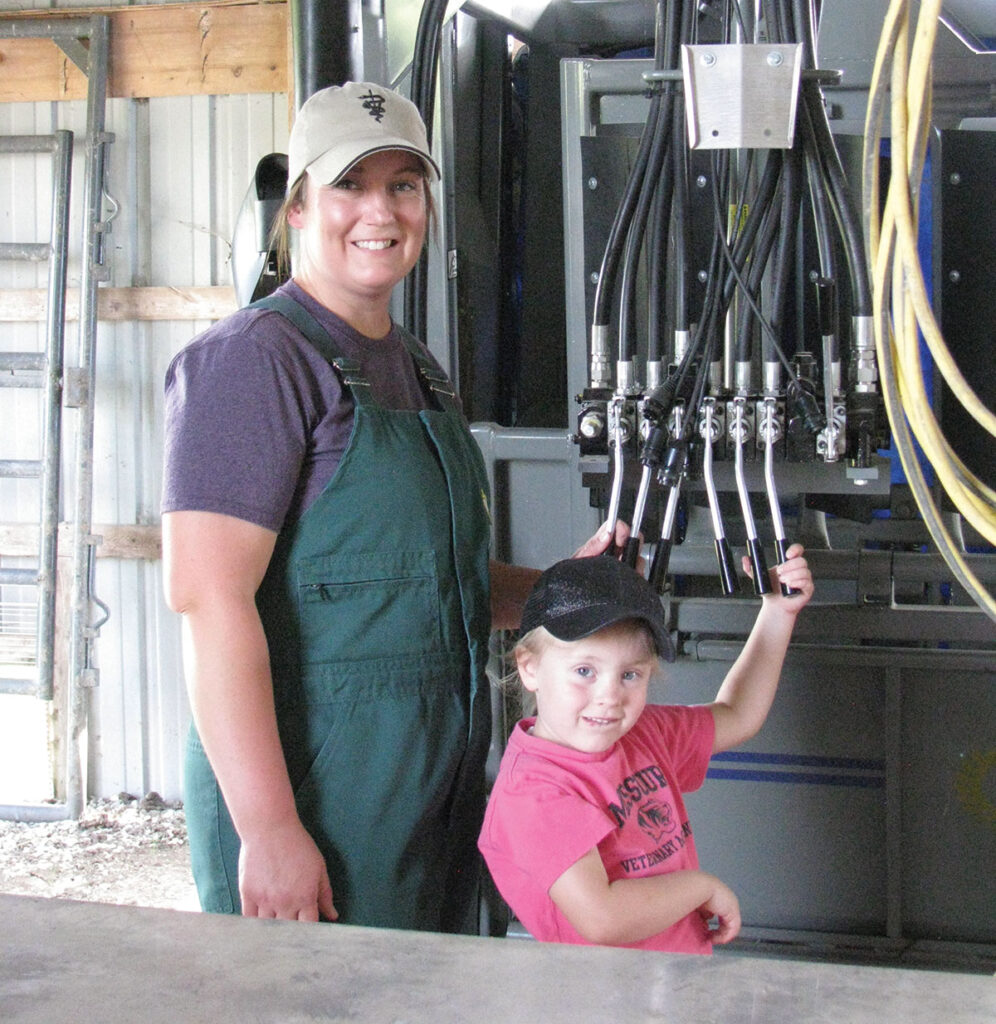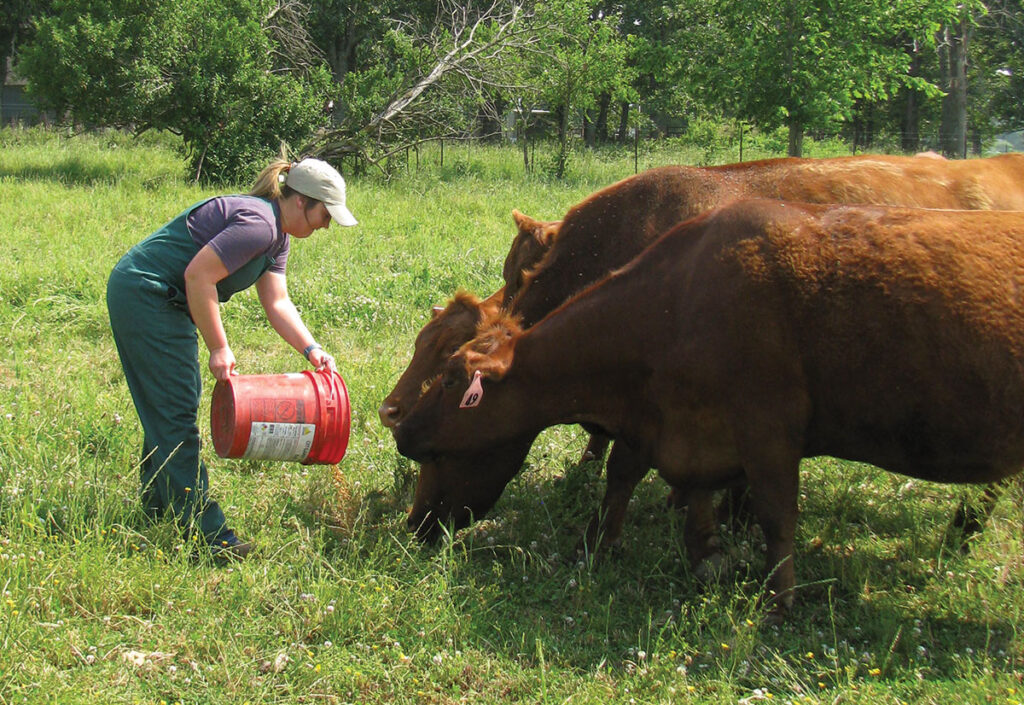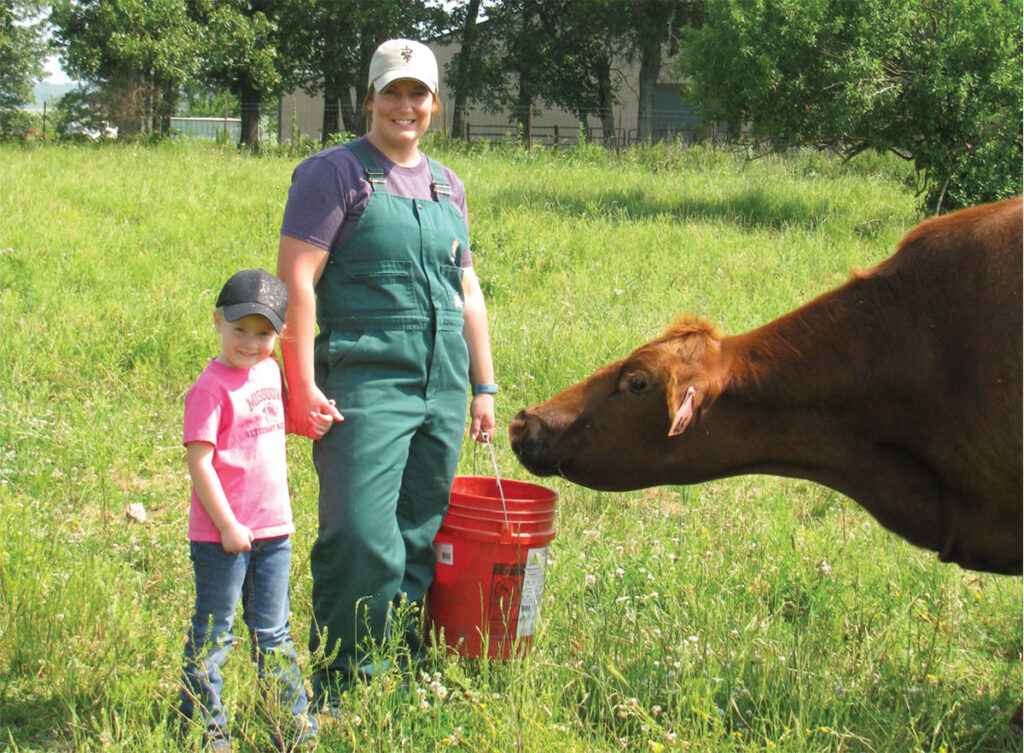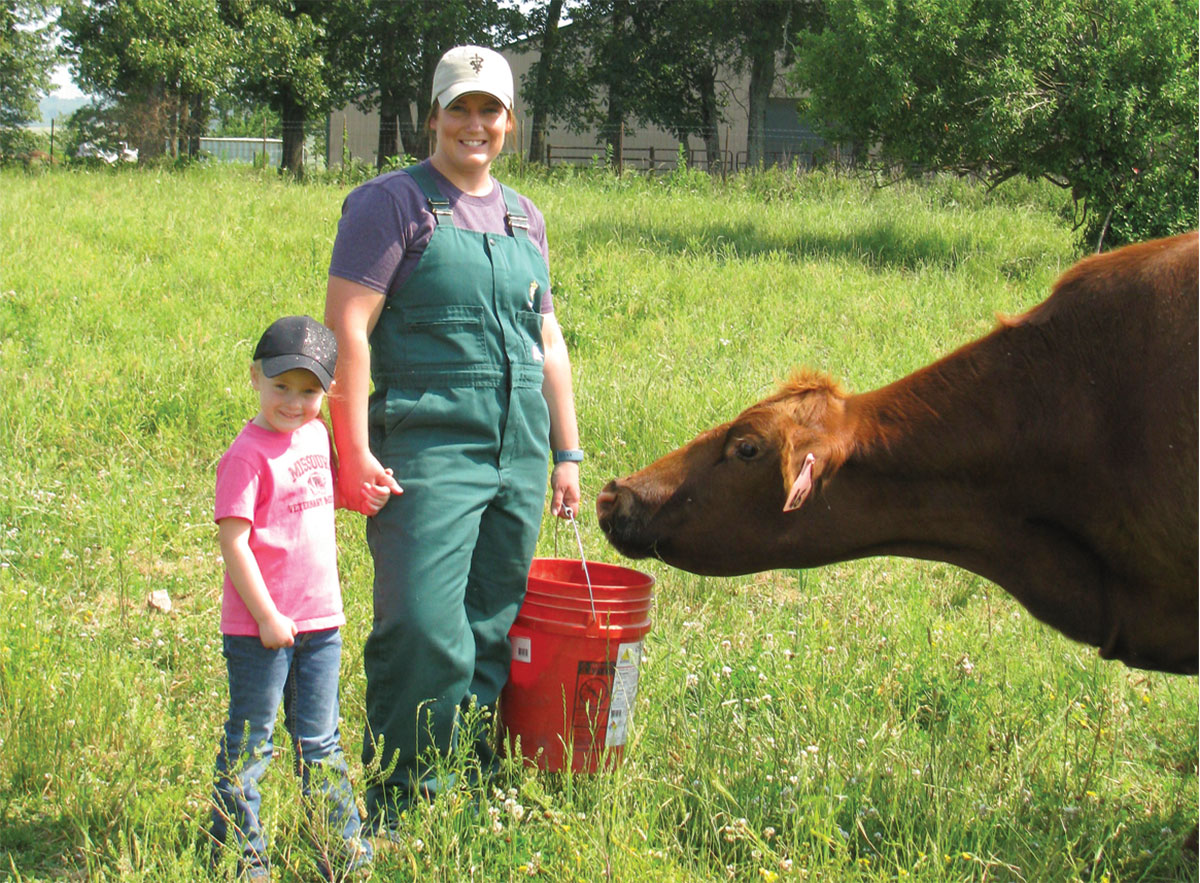
Emily Johnson determined her career path at a young age
All kids dream of what they’re going to be when they grow up. Emily Johnson was 3 or 4 years old when she chose her profession.
She was at the family farm in Webster County, Mo., watching Dr. Lloyd Gloe work on a cow that had prolapsed. At their old set-up, they had a chute, and Emily had an upside down stock tank for her “command station.” Watching from her perch as the vet was working on the cow, she asked her dad what he was doing. He told her he was the cow doctor and he was going to fix the cow.
“Well, I want to be a cow doctor,” Emily said.
It stuck.
“Once I got a little older I did the leg and back work. I spent hundreds of hours shadowing at the clinic; from the time I was 16 years old until I graduated vet school, I worked up there. I was very fortunate to have very great mentors: Drs. Lloyd Gloe, Scott Espy, and Vince Caldwell,” Emily said. “I got lots of experience under my belt before I actually graduated. I can attribute my desire of wanting to pursue veterinary medicine to those three.”
Today, Emily is one of the owners of Marshfield Veterinary Clinic, along with her mentors, with the exception of Dr. Lloyd Glo, who has retired. Emily has been a vet there for 11 years and an owner for four years.
In addition to the Marshfield clinic, which is open 6 days a week, the partners have a clinic in Diggings, which is open five days each week.
“There is one doctor, at least, in each office every day. The rest of us float around and do farm calls or scheduled herd health work,” she said. They have four full-time doctors and two part-time.
Becoming a veterinarian requires hard work and commitment.

“I tell people I cried the day I moved to Columbia and I cried the day I came home,” Emily shared. “I learned to love Columbia, but after seven years in the city, I was ready to get home. I wanted to set my roots down here.”
She was able to finish school in seven years because she was in an early acceptance program. The average time to become a veterinarian is eight to 10 years.
Something really important to Emily is generational farms, including her own family farm.
“That’s why I came back here. My grandfather started this farm. He has now passed, but he wanted his farm kept in the family,” she explained.
Emily and her husband, Paul, live on the farm near Marshfield, Mo., and are raising their 5-year-old daughter Grace to appreciate farm life.
They have a few registered Red Angus and her family (father and uncles) have several commercial cattle.
After working with animals all day Emily admits sometimes her own cattle “get last pick.”
“Sometimes I’m preg-checking two weeks behind where I’d like to be. But overall, I still love it,” she said. “I’m fortunate that my off-the-farm job is still tied into agriculture, so I get the best of both worlds. Not everybody has that luxury.”
For Emily, the most difficult animal to treat depends on the situation and the animal.
“I have ones of every species that are difficult. Cows are pretty easy if you have proper facilities. The same with horses and any species. They all have their specific challenges and their certain diseases and things that are harder to manage than others,” she said.
Being a woman in agriculture is not detrimental for Emily.
“Being female, I don’t find things harder; I just have to go about things a little differently at times. I can get the same job done; I just may have to do it a little differently than my counterparts. Where they may be stronger to do things one-handed, I’m more agile and smaller and can get in some tighter spaces than they can and use both hands. So there are definitely some advantages. You just have to get creative,” Emily explained.

She spends at least a portion of four to five days a week in the field.
“We have some small animal doctors, so I’m not in the ‘office’ office that much,” she said
“All of my technicians love to go out in the field with us. But we do have one that does a lot of that. They don’t necessarily go with us on a day-to-day sick calls. Most of the time I’m solo for that. But on the bigger herd health stops, Haley Scott is my right-hand woman,” Emily stated.
The biggest mistake Emily sees people make with animals is getting in over their head too early.
“There’s an order that you should do things. You should research. You should read about things. You should figure out how many head your place can hold. You should build fences and have some facilities before you turn cattle out onto some land,” Emily explained, adding that she sees that issue a lot. “Then you run into problems and you can’t do anything about it because you have no way to restrain the animal or even catch it,” she added.
Her advice was not to put the cart before the horse and to “make sure you have everything lined up before you actually dive in and get those animals.”






